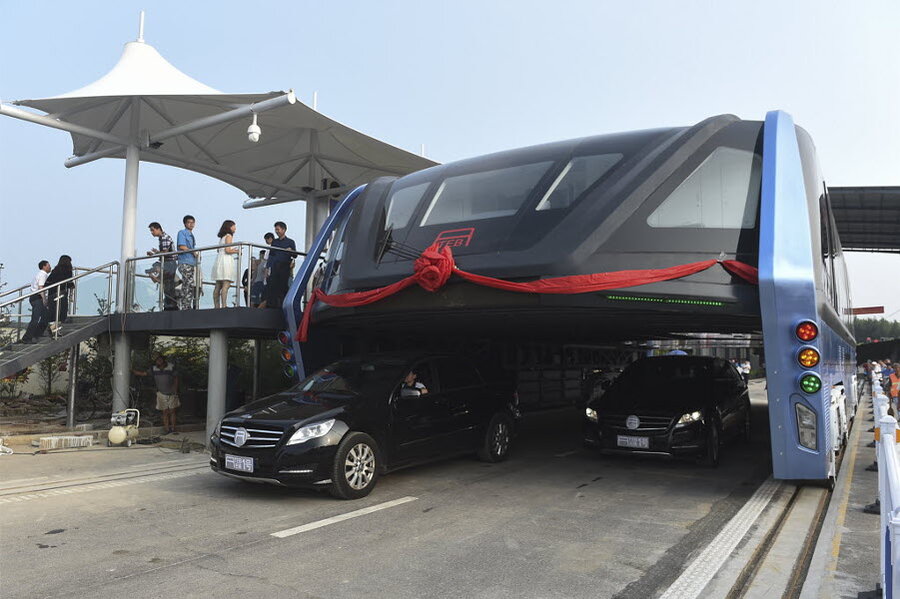China will test a bus that beats traffic by riding over it
Loading...
What if, instead of idling in morning traffic, your bus could simply pass over it?
In China, urban transport designers are working to make that concept a reality. The electrically powered Transit Elevated Bus (TEB-1) conducted its first road test on Tuesday, according to the government-owned Xinhua News Agency. The vehicle, which straddles the road to allow cars to drive beneath it, could someday mitigate traffic congestion in the densely-populated country.
In 2009, engineer Youzhou Song founded Shenzhen Huashi Future Parking Equipment. A year later, the company produced a concept video depicting an elevated bus similar to TEB-1, which subsequently went viral.
In subsequent concepts, designers proposed a 1,200-person capacity and an elevator system for boarding. Inventors were slated to begin laying track in 2010, but officials from Beijing’s Mentougou District refused to sign off on the project without a road-tested prototype.
Mr. Song and his partners continued to produce concept videos, but it looked like the project had been shelved – until now.
On Tuesday, the TEB-1 tested its braking system and power consumption on a stretch of road in Qinhuangdao City. The new prototype, which is about 72 feet long and over 25 feet wide, retains much of the original design. But there are a few notable differences.
The TEB-1 has a lighter capacity of 300, and passengers will board from an elevated platform. Its more compact design may be an improvement, rather than a concession: reduced size means faster commutes.
But some critical questions have been left unanswered. How will the bus interact with taller vehicles, like trucks and double-decker buses? What about cars that need to turn or change lanes? Can it maneuver sharp turns?
The vehicle’s first run may be more of a proof-of-concept than an actual road test. But a functional straddle bus could be a boon for China. By reducing the number of cars on the road, the country could tackle traffic congestion and pollution simultaneously. Officials have adopted a stricter stance on emissions in recent years, so future incarnations of TEB actually have a shot of hitting the road for good.
China isn’t the only country attempting to revamp public transportation. Olli, an autonomous electric shuttle that can seat 12 passengers, is expected to launch in several US cities by the end of 2016. Next year, a tech company in Singapore will begin testing self-driving taxis. Elon Musk has announced plans to develop large, urban transport models for Tesla.






